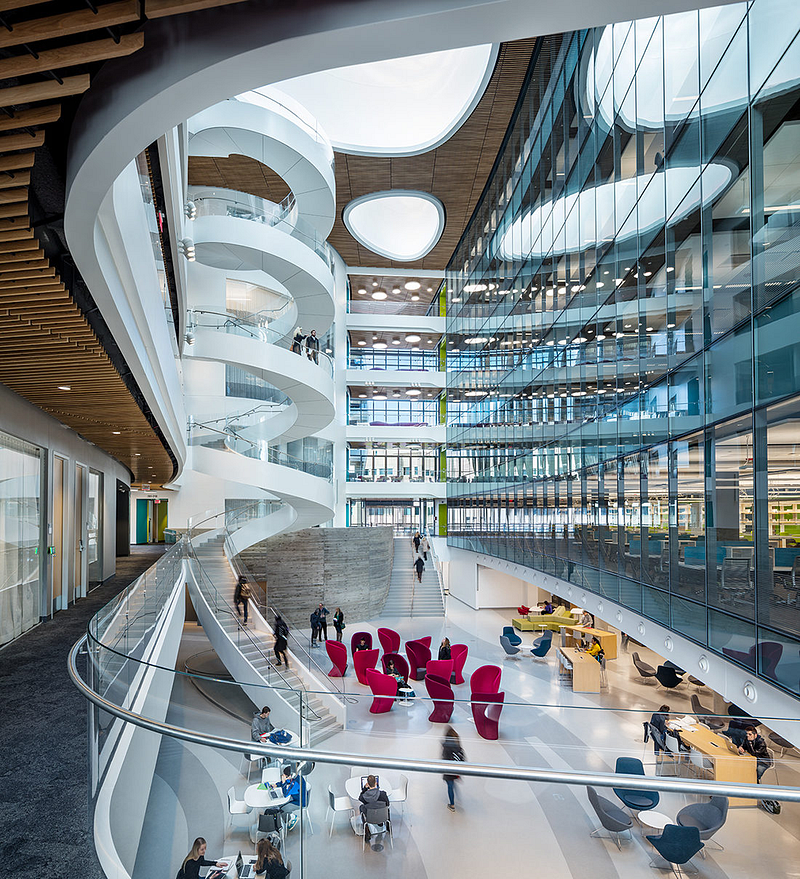Redefining the ‘concrete jungle’: The green building revolution
By Shelley Seunghye Jeon, Pharmacy, 2025

Amid increased concern over a decaying planet, the oxymoronic idea of a “green building” has been perpetuated by architects, environmentalists, and city-planners alike. According to the World Green Building Council, green buildings can be any structure that reduces environmental damage and promotes the conservation of Earth’s climate and natural environment. They can be ‘green’ in their design, construction, or operation and may possess state-of-the-art technical features such as the efficient use of energy and water, renewable energy, and sustainable materials. Green buildings are also flexible in their architecture and tend to be uniquely aligned to a region’s distinct climate, culture, or socioeconomic priorities. Though one may typically associate the monotonous assembly of concrete with building, the new era of green buildings is redefining the process behind building to be fluid, updated, and creative.
For instance, consider the structure of Northeastern’s Interdisciplinary Science and Engineering Complex (ISEC), a LEED gold certified building designed to use 78 percent less energy than a standard intensive research building. According to Payette, the Boston-based architecture firm that designed ISEC, the concept for ISEC was Flow and Movement, an appropriate theme that effectively characterizes the building’s momentum in both expanding the Northeastern campus and connecting the Roxbury, Fenway, and Back Bay neighborhoods of Boston. From its signature solar veil to the daylight-filled atrium, daylighting controls, and its construction with recycled aluminum materials, the building is simultaneously timeless and cutting-edge, rigidly designed yet fluid to the eye. This two-fold aspect of the structure is appropriate considering the conglomeration of culture and innovation that is concomitant to conducting scientific research in a historical city.
Though one may typically associate the monotonous assembly of concrete with building, the new era of green buildings is redefining the process behind building to be fluid, updated, and creative.
The green building revolution began in the early 1990s and has since proliferated into a global movement for “green districts.” The consulting firm McKinsey introduces green districts as an expansion of green buildings that are “small enough to innovate quickly, and big enough to have a meaningful impact” on both economic and environmental terms. However, in order for the transition to green districts to be feasible, a level of coordination beyond that of city-planners and architects is required. The creation of green districts surpasses the structural capacity of a building and contains an inherent pressure for the residents of these structures to live more environmentally conscious lives. Hence, amidst the ingenious structure of many green buildings, including those on Northeastern’s campus, therein lies a haven not only for research and innovation, but for global citizens cognizant of their responsibilities to the environment.
Building and Environment (2012), DOI: 10.1016/j.buildenv.2012.02.029
